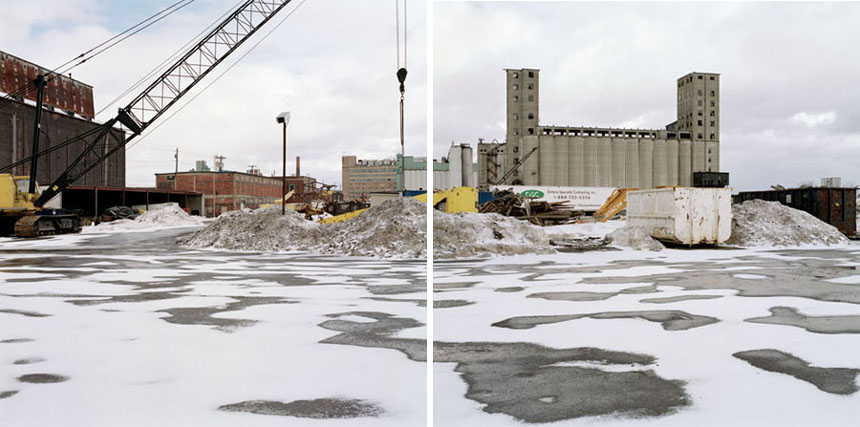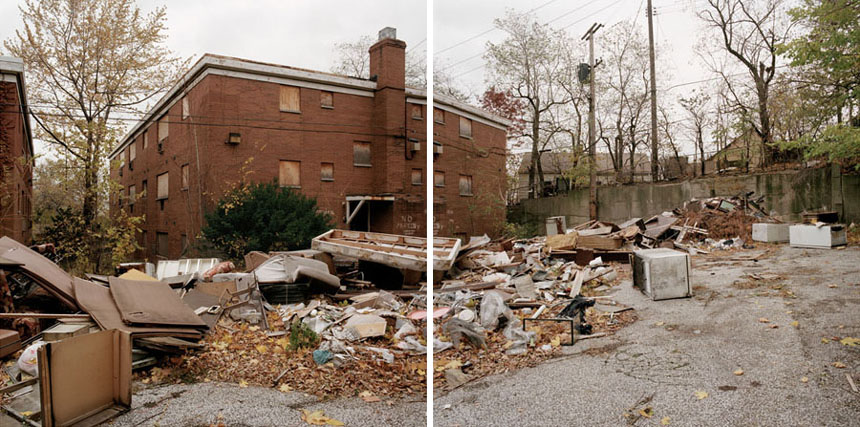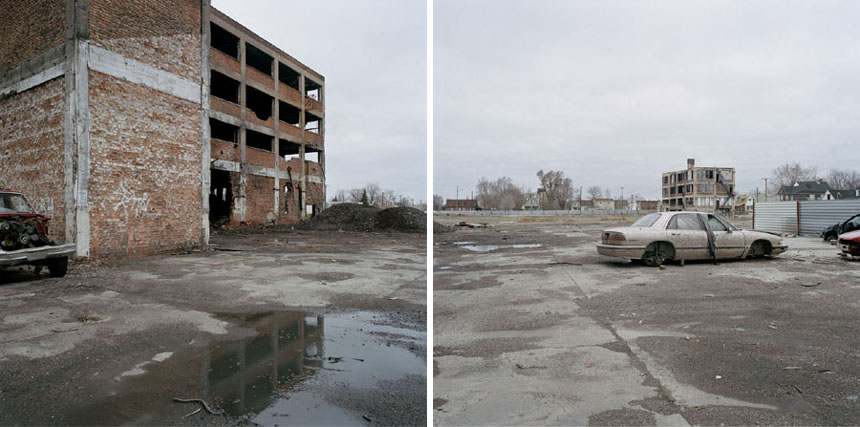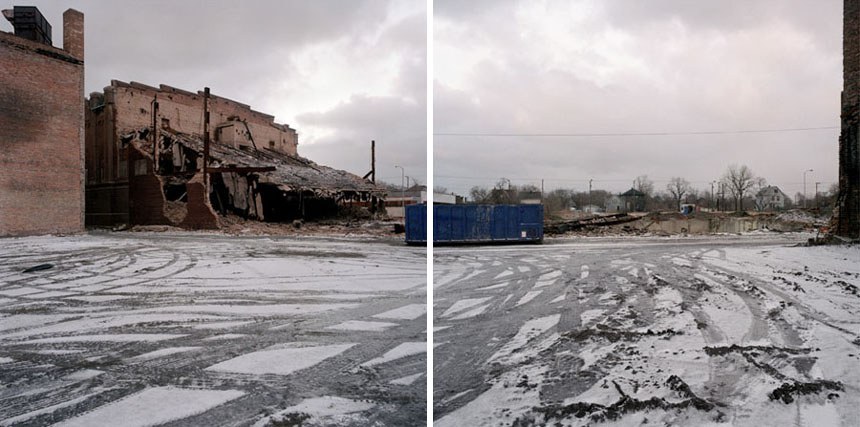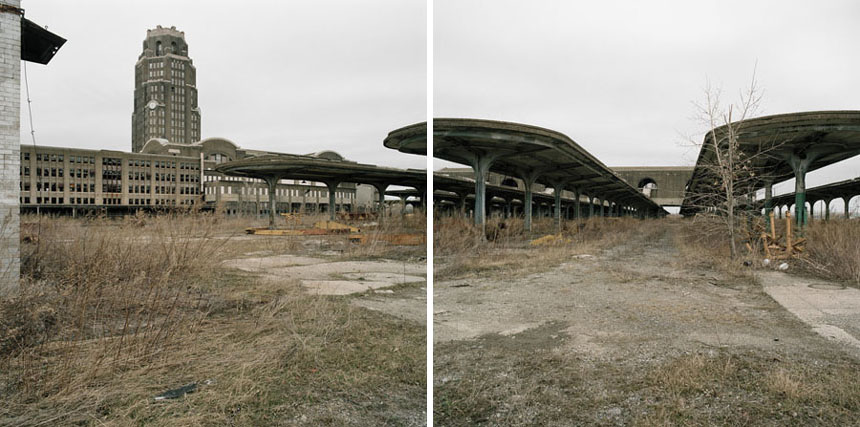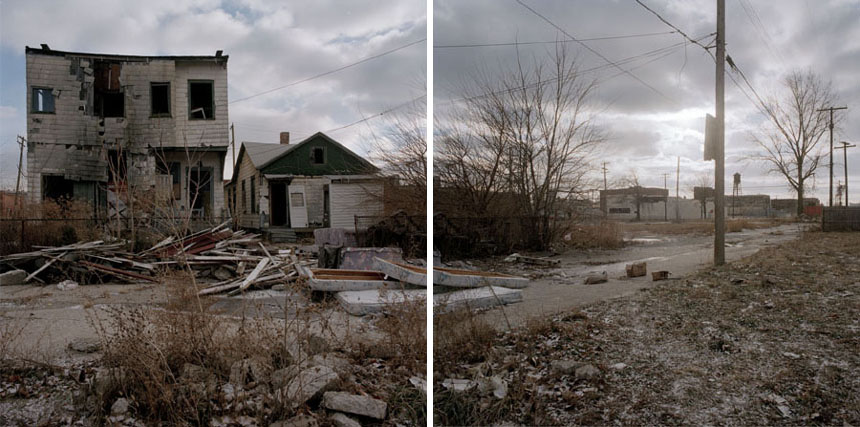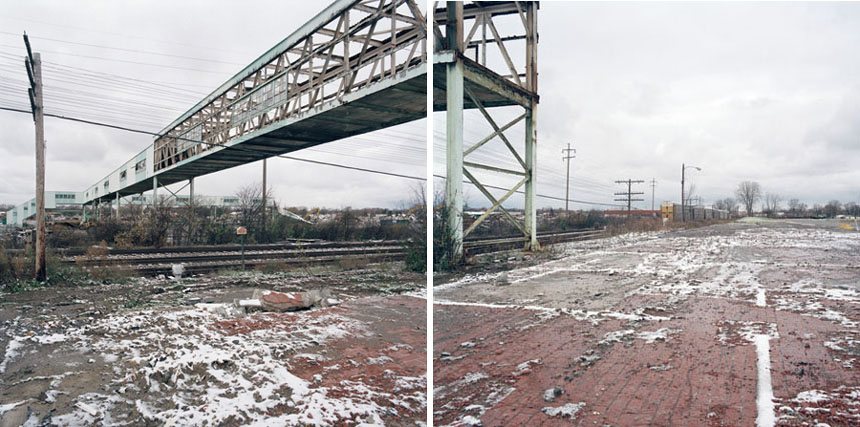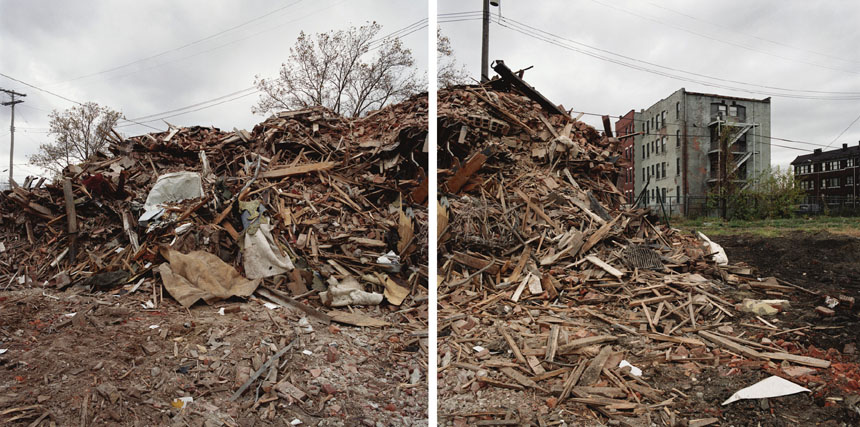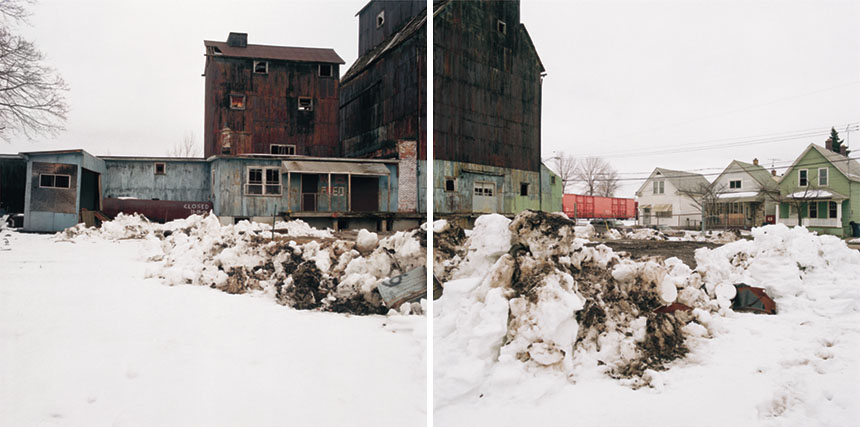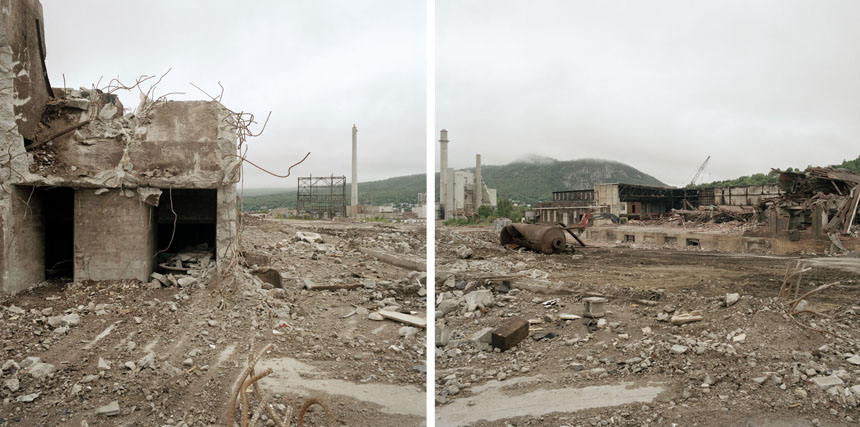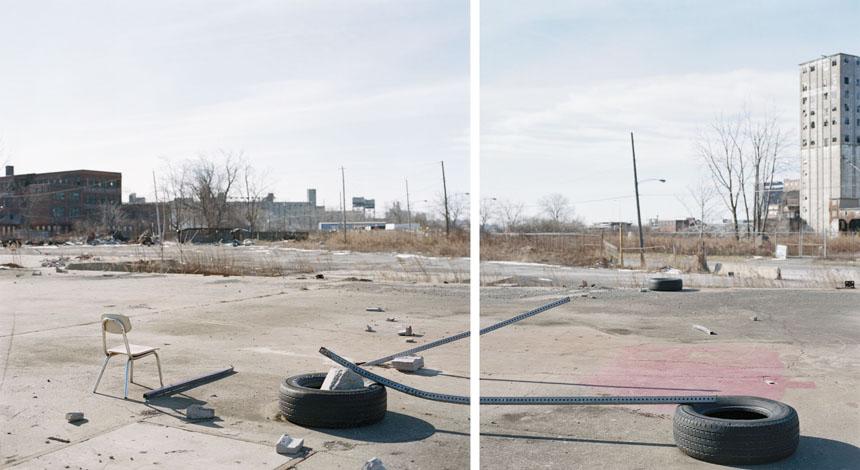Photographs always exist in a context—they are laden with social or political meaning.
I have explored this idea in my work for twenty years. Feeling a philosophical kinship with the New Topographics Movement from the 1970s that documented the impact of the constructed suburban world on the natural one, I wanted to invert that premise by looking at the urban core and asking how suburbanization after World War II affected city centers in America. What were the consequences as we went from a city-dwelling lifestyle based on mass transportation, high density living, and production to a suburban, car-dependent, low-density lifestyle based on consumption?
At the start of my career in the mid-to-late 1980s, I was engaged with what Walker Evans termed the “historical contemporary” along America’s secondary highways. In the mid-1990s I switched gears photographically and took the road into the city, turning my attention toward urban environments under siege, in part inspired by Camilo Vergara’s book The New American Ghetto. These discarded landscapes—composed of abandoned manufacturing sites, low-income housing, and commercial ruins found throughout the Northeastern United States—were the byproducts of racial segregation, white flight, deindustrialization and disinvestment. I wanted to investigate these obscure parts of our social landscape, environments shaped by a devolving decay.
Ironically, the very fact that these places (usually inhabited by poor minority populations) are ignored by a mainstream media more interested in projecting images of American abundance, and overlooked by a body politic clinging to ideals of upward mobility, provides inspiration for my work. I believe in the importance of the documentary traditions’ ability to “witness”, and the vital historical role photography plays in our understanding of social issues and social structures. As an artist I want to participate in, and contribute to, that on-going discussion.
With the diptychs I want to make visible the invisible inner city landscape, as well as reveal the sometimes not-so-apparent socio-economic linkages between rampant growth at the suburban periphery and the decline of urban centers in post-industrial American.
While the pictures are taken with a distanced dispassion, that slight remove is not indicative of any lack of concern on my part. I hope for the viewer they “read” and function on a more metaphorical level, suggesting that the “American Dream was never quite what it seemed.”

